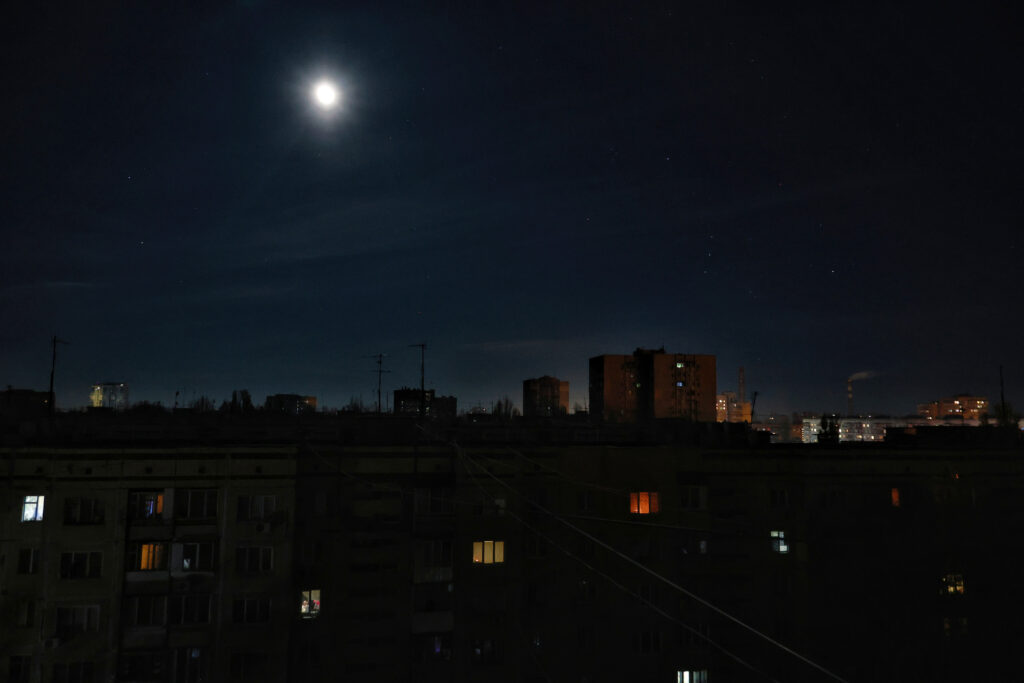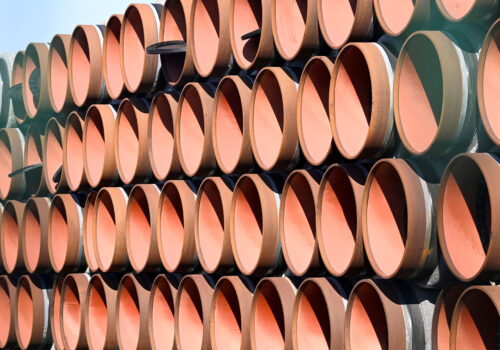Russia kicked off its winter assault on Ukrainian energy facilities with missile and drone strikes on November 16, damaging critical energy infrastructure when the country is struggling to accumulate enough gas for winter storage. Despite optimistic government claims that Ukraine is entering winter with “the highest possible level of readiness,” Ukraine’s energy system is at its most precarious state since the full-scale invasion. As of late October, Ukraine’s gas storage stands at 12.5 billion cubic meters (bcm), stalling below its early November target of 13.2 bcm. Ukrenegro, Ukraine’s national electric grid operator, has been forced to introduce intermittent shutdowns to reduce strains on the system after Russia attacked electric transmission facilities nationwide. With heating season underway as of October 15—when temperatures can drop as low as –20 degrees Celsius—low gas storage levels and an already fragile electric grid increase the risk of prolonged blackouts throughout the country this winter.
This most recent round of Russian attacks damaged energy facilities in several oblasts, including hydroelectric plants, critical transmission infrastructure, and network servers. Ukraine is bracing for its toughest winter yet, while Russia has already destroyed most of Ukraine’s energy generation capacity and attacks likely to escalate. Hardening Ukraine’s energy infrastructure against physical and cyber-attacks and ensuring Ukraine can defend its energy systems against Russian attacks can help Ukraine endure the frigid winter months. As temperatures in Ukraine drop below zero, it is imperative that Ukraine’s partners act with urgency to strengthen Ukraine’s energy infrastructure defense systems.
STAY CONNECTED
Sign up for PowerPlay, the Atlantic Council’s bimonthly newsletter keeping you up to date on all facets of the energy transition.
This winter is different
Although Ukraine’s energy sector remarkably withstood Russian bombardments during two previous winters, this year presents a much greater challenge. While millions of Ukrainians lost heat during sub-zero temperatures last winter, Russia’s intensified attacks have left Ukraine’s energy systems more vulnerable than in previous years. Many of Ukraine’s power plants are either destroyed or occupied, and critical infrastructure—such as thermal power plants and high-voltage substations—remains vulnerable to missile and drone strikes. As Russia launches another offensive against Ukraine this winter, Ukraine is far less equipped to rebound as it did last year.
Ukraine’s gas reserves stand notably lower than the 16 bcm amassed by mid-October last year. Hitting the target of 13.2 bcm to meet winter demand requires an additional 0.6 bcm of piped gas imports from the European Union (EU). Ukrainian underground storage facilities (UGSs), which are the largest in Europe, played a critical role for storing up to 10 bcm of gas for consumers outside of Ukraine. European traders have been injecting gas into these storage facilities throughout the war. However, because of recent Russian missile attacks, European traders are hesitant to send gas to the country—in fact, recently, European traders have, on net, been withdrawing from Ukrainian storage sites.
An energy system on the brink
Since February 2022, Ukraine’s energy facilities have faced relentless, targeted attacks. From 2022-23, Russian forces have destroyed or occupied half of Ukraine’s generation facilities and damaged or destroyed nearly half of the country’s high-voltage substations. Russia has targeted almost everything in Ukraine’s energy system: dams, gas storage, transmission lines, transformers, autotransformers, and construction sites. Initially, the attacks focused largely on the electricity distribution networks but have shifted toward generation. After Russia illegally occupied Ukraine’s Zaporizhzhia Nuclear Power Plant, Ukraine’s nine remaining unoccupied nuclear reactors are the last fully functioning generation facilities in the country, but Russia’s attacks on high-voltage substations threaten even these lifelines.
Russia’s November missile and drone attacks represented the largest attacks on Ukrainian energy infrastructure since August 26, when over 127 missiles hit critical Ukrainian energy infrastructure, including the Kyiv Hydroelectric Power Plant. As a result, blackouts affected more than half of Ukraine’s oblasts, including Lviv, Odesa, and Volyn.
The August attacks put Ukraine’s already weak energy sector over the edge. In September, the International Energy Agency estimated that Ukraine’s supply shortfall could reach six gigawatts (GW) this winter, equivalent to the peak demand of Denmark. This deficit spells serious risks for the country.
Ukraine is getting inadequate support
The Kyiv School of Economics estimates that war-related damages to Ukraine’s energy sector amount to over $16.1 billion, with transmission facilities bearing the brunt of Russia’s assault. DTEK, the largest private investor in Ukraine’s energy industry, reported earlier this year that Russia had targeted its thermal power plants over 180 times since the full-scale invasion, depleting 90 percent of the company’s generation capacity.
Although Ukraine’s energy storage levels are lower than in previous year, and its electric grid is in a precarious state, there are several immediate actions that can be done to bolster Ukraine’s energy security ahead of the Russian winter offensive.
Since the August attacks, the EU has pledged a $39 million loan and the United States $325 million to support Ukraine’s grid rebuilding efforts, a welcome boost but one that does nothing to shield against further Russian assaults. Without enhanced air defenses, Ukraine’s critical infrastructure remains exposed.
With most of its thermal generation destroyed, Ukraine has increasingly adopted decentralized energy systems to defend against Russian strikes. Decentralization must accelerate to keep up with winter needs—it’s much more difficult to take twenty small, dispersed systems offline than it is to take out one large thermal plant. By deploying low-capacity energy sources such as household batteries and power generators, the country reduces the efficacy of Russia’s widescale attacks.
Local municipalities are already using small gas turbines to supply homes, hospitals, and essential services. The US Agency for International Development (USAID) is assisting in deploying 20-megawatt gas-powered units in district heating systems across Ukraine. Although some factories have invested in the turbines, they are expected to produce only 0.5-1 GW this winter—a minor relief to Ukraine’s worsening energy crisis.
Ukraine must also add more passive protection around its transformer substations—structural reinforcements, such as concrete walls and steel-enforced enclosures, which make it more difficult for attacks to inflict significant damage.
During the April 2024 Russian offensive, Ukraine’s passive protection saved at least half of its substation equipment from destruction. But, notes Volodymyr Kudrytskyi, then CEO and chairman of the national energy company Ukrenergo, “these are huge structures, the arrangement of which requires huge financial and human resources.”
The protection of Ukraine’s energy infrastructure goes beyond physical defense. Cyberattacks have tripled since the start of the war, and defenses must be upgraded. Strengthening cyber infrastructure, developing incident response plans, and collaborating with NATO partners can protect from cyberattacks that could potentially take the entire system offline, as happened in 2016.
The stakes are high
Sustained attacks on the country’s energy infrastructure could leave millions of Ukrainians without heating, disrupt critical services, and provoke further migration into already-strained EU countries. Without adequate air defense support for Ukraine, an energy and humanitarian crisis risks spilling into broader European instability.
The security of Ukraine’s energy system this winter depends on the support Kyiv receives from its allies. Strengthening Ukraine’s air defenses to cover existing gaps could prevent further damage and reduce the risk of a complete grid collapse.
Beyond immediate human costs, the continued destruction of Ukraine’s energy infrastructure has lasting implications. Attacks on energy facilities reduce industrial output and heighten Ukraine’s dependence on energy imports, complicating long-term recovery efforts. The persistent targeting of critical infrastructure highlights that, for Russia, destabilizing the energy system is not merely a wartime tactic, but a broader strategy to undermine Ukraine’s future.
As Ukraine braces for another harsh winter, Russia appears poised to exploit every vulnerability in Ukraine’s energy landscape. Short on energy reserves and its infrastructure at the breaking point, Ukraine remains at high risk of intensified Russian attacks. It should be assumed that Russia’s tactics of degrading critical infrastructure will continue, and perhaps escalate given the circumstances.
To secure Ukraine’s future, bolstering the resilience of its energy infrastructure is imperative. This means hardening critical facilities against both cyber and physical attacks, strengthening rapid response plans to restore power, and ensuring Ukraine has the advanced defense systems needed to protect against ongoing threats. Without these defenses, international financial support risks being undermined by the next wave of attacks.
Haley Nelson is an assistant director for European energy security at the Atlantic Council Global Energy Center.
MEET THE AUTHOR
RELATED CONTENT
OUR WORK

The Global Energy Center develops and promotes pragmatic and nonpartisan policy solutions designed to advance global energy security, enhance economic opportunity, and accelerate pathways to net-zero emissions.
Image: Residential buildings are seen during a power outage in Odesa, Ukraine, on November 18, 2024. (Photo by Ukrinform/NurPhoto)NO USE FRANCE





